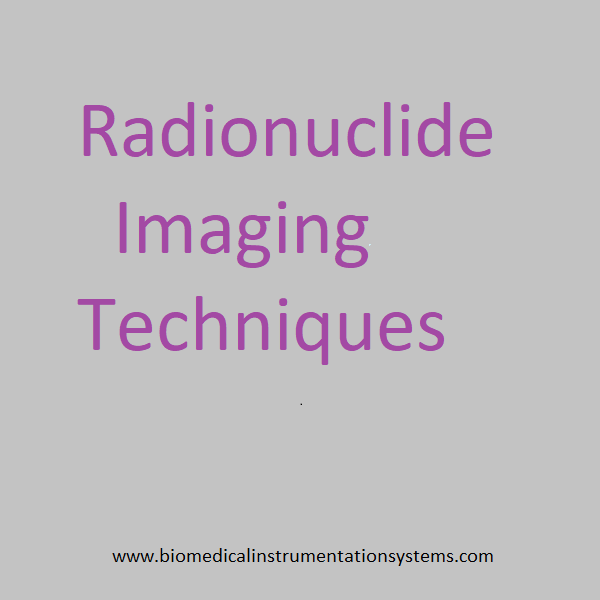The radionuclide imaging devices place radionuclides, called tracers, within the body. We have 3 types of imaging that include the following:
- Single Photon Emission Computed Tomography (SPECT)
- Radioimmunoassay (RIA)
- Positron Emission Tomography (PET)
Let’s discuss briefly each of the above listed imaging techniques:
Single Photon Emission Computed Tomography (SPECT)
SPECT uses a radionuclide with relatively longer half-life. (The half-life is the time, it takes half the radionuclides to decay and emit radiation).
The radionuclide decays and emits a gamma ray with a certain amount of energy. The detectors, called gamma cameras or Anger cameras, absorb the gamma rays allowing the doctor to determine the location within the body from which they were emitted.
Related: The Instrumentation for the Medical Use of Radioisotopes Diagnosis
Radioimmunoassay (RIA)
RIA is a remarkable and highly sensitive technique developed to determine the concentration of molecules within the body using radionuclides. For instance, in the case of measuring the concentration of an antigen within the body, a known quantity of an antigen is labelled with a radionuclide and mixed with the unlabeled antigens within a serum or in the body. The antibody protein molecules you are interested in will attach to both the labelled and unlabeled antigens. These complex structures can be separated out from the other material and the radioactivity in the separated complex structure will determine the concentration of unlabeled antigens within the body.
Find out more about: Fingertip Pulse Oximeter Blood Oxygen Saturation Monitor

Positron Emission Tomography (PET)
PET uses a radionuclide or a radiopharmaceutical drug that targets a specific item of the body e.g. a tumour. The radionuclide decays by emitting positrons which are anti-electrons. The body has a huge number of electrons and one of them is annihilated by the positron and produces gamma radiation, which is emitted from the body and detected.
You can also read more on PET Imaging here.

Leave a Reply
You must be logged in to post a comment.